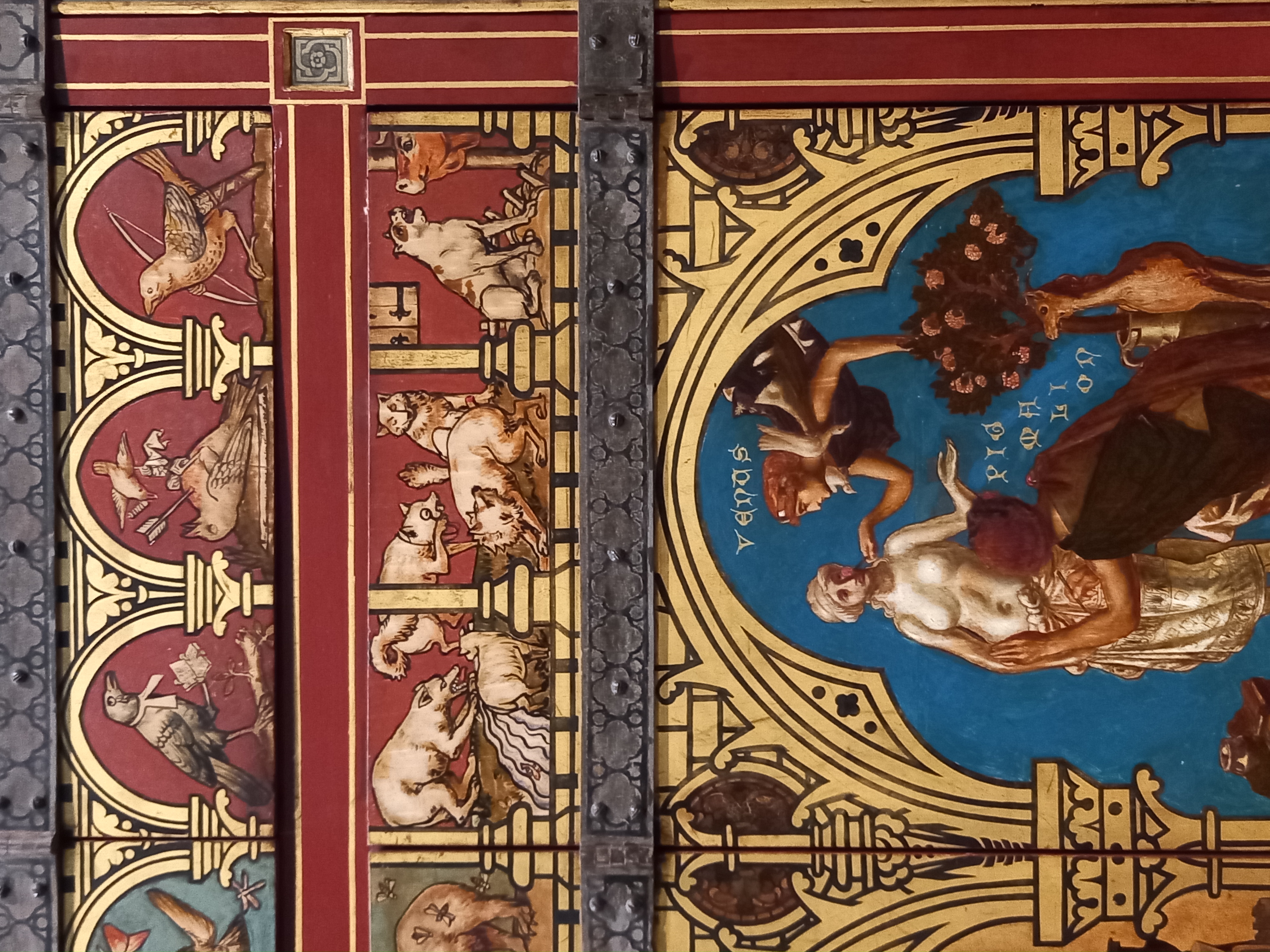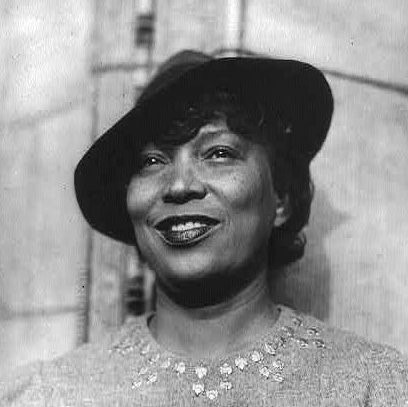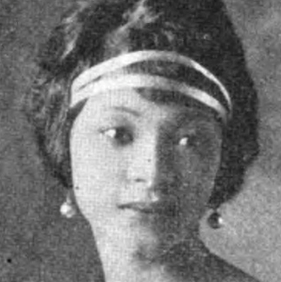The A-Z database list on SOLO can take you to many weird and wonderful places. Each database provides a window into a new personality. Will I be the person who knows an uncanny amount about Early Zoological Literature[1]? Or perhaps seleucid coinage[2]? It seems that even just a little light reading in these databases would get me ahead of the pack – though perhaps Oxford is a city in which that is not reliably the case…
As tempting as these avenues of identity re-invention are, I have a feeling that I would have to somewhat crowbar these topics into conversation. Talking a lot about coins is something that is a little less charming when you’re the one who brought them up… Perhaps, I thought, it might be sensible to choose something a little more mainstream. So, this month I decided not to start a new chapter of my persona, but revisit an old one. The topic I’ve selected for this month indulges a subject I was obsessed with as a child, and the database itself is one that finds the perfect balance between accessible and delightfully specific: the database of Victorian Popular Culture. A sprawling resource with countless entries, this database is still extremely navigable and filled to the brim with treasures.
Arriving at the Database
When first opening the database of Victorian Popular Culture, you are greeting by a well laid-out menu. The initial drop down tab is arranged into the sections:
‘Introduction’ to give users a sense of what they can do with the resource
‘Browse documents’ for broad umbrellas of research topics
‘Explore’ for the researcher just dipping their toe into Victorian waters (ideally they’d also be wearing a very fetching Victorian bathing suit to boot)
‘Visual sources’ for photographs, plates, cinema footage – the list goes on
‘Help’ – for a more detialed guide of how to make the most of the database and further information

Having a Browse
While all the headings in the ‘Browse Documents’ section looked tempting, I decided to look into Circuses. Once in the item list, I was met with even more (delightfully organised) drop down boxes. Not unlike SOLO or the Ashmolean Database (our previous database spotlight), here you can select the item type you’re looking for. Perhaps it’s ephemera, or playbills. At this stage you can also filter by the Library/Archive that holds the item. This is a great feature for those that wish to find items they can visit in person.

Deciding not to filter the results at this stage, I began scrolling through the items. With thumbnail images of each item, you get a pretty clear idea of the sort of thing you’ll be looking at when you select an item. As I scrolled, enjoying snapshots of photographs and sheetmusic, my eye was caught by a diving figure of gold foiling on the cover of Acrobats and Mountebanks by Hugues Le Roux (1890)[3].

Acrobats and Mountebanks
Clicking into the item took me to the catalogue page with publication information and item type. For example, here I learnt that this text is kept as part of the National Fairground Archive at the University of Sheffield[4]. If I absolutely had to get trapped in an archive overnight, due to what I’m sure would be very legitimate and even likely circumstances, I could do worse than this one. (These are the kinds of scenarios you begin to ponder when you become a library graduate trainee…). If one database just isn’t enough, treat yourself to a browse of the NFCA and find materials on illusions, menageries, pleasure gardens and fairground rides[5].
The text of Acrobats and Mountebanks was digitized and I had the option of browsing the whole text page by page or navigating by chapter. I was struck by the high quality of the images, so entered into the world of the Victorian circus without a particular destination in mind. Weaving through the acts and attractions described in the book I could feel the the ghost of the author’s excitement; gorgeous illustrations throughout the text draw you into a world where horse drawn carriages carry ladies in smart dresses to the fair (p. 38), where ‘everyone is come for amusement and intends to get it’ (p. 39). In the preface it is promised that the reader will be led to ‘the threshold of an unknown world’ (p. vi) and I felt a little like someone about to attend the circus myself.
Further into the book, in the chapter titled The Private Circus, Le Roux writes of a certain number of people for whom simply attending the Circus was not enough. So allured were they by the world of the trapeze artist and conjurer that they would seek out and enter a very particular tent. It seems that during this period, it was possible for the circus itself to be a place that would not only dazzle spectators with the art of acrobatics, but teach them how to perform it themselves. With a suitably mythical turn of phrase, the transition from circus-goer to circus performer is described by Le Roux as a ‘metamorphosis’ (p. 308).
One such individual who engaged in this act of transfiguration was Lieutenant Viaud. A man of many military and literary achievements[6], he gains another string to his bow with his acrobatic endeavours:
‘One feels that in him exists that spring of elasticity which raises a body from the soil and wrests it from the laws of gravitation’ (p. 309).
Despite finding this text through such an ordered sequence of tabs, drop down menus and chapter links, the quality of the digitized images and the ease of navigation within the database made for an immersive reading experience. I was as drawn into the world of the Victorian circus as Lieutenant Viaud, though my forward roll may yet leave something to be desired.
London Low Life
Closing the flap of the circus tent for now, let’s creep a little further into to the back streets of Victorian London with a dictionary of slang[7]. This extensive resource can be found on the ‘London Low Life’ a sister page of the Victorian Popular Culture database. Here is where you can find all things ‘street culture, social reform and the Victorian underworld’. After the bright lights of the circus a little shadiness might do us good.

Scanning through the entries, a few favourites jumped out. I particularly enjoyed ‘a pig’s whisper’ (a grunt) ‘a bantling’ (a young child) and ‘knights of the rainbow’ (waiters, footmen, lacqueys). Having topped up my slang vocabulary, I thought I would round off my venture into the world of databases with a hop across to the Oxford English Dictionary, or OED.
Oxford English Dictionary Online
Available through SOLO, the OED is an incredible resource: ‘the definitive record of the English language’[8], no less.
The OED serves as a guide to the meaning, history, and pronunciation of 600,000 words— including those that have dropped out of use – from across the English-speaking world.
Every entry has example quotations from across the period the word is/was used in, from literary examples to specialist periodicals, film scripts to cookery books.

As you can see in the red text on the top right of this page from the OED, this entry has not been fully updated. The entries in the OED undergo constant revisions to stay up to date, each revision ‘subtly adjusting our image of the English language’[9].My deep dive into the word ‘bantling’ shows off some of its uses over time, both literal and figurative.
I hope this mini excursion goes some way to show how different databases, available both through SOLO and online, can work together to provide richer detail for whatever it is you’re researching. In my exploration into the world of Victorian circuses, I dipped into the database of Victorian Popular Culture, the National Fairground Archive and the Oxford English Dictionary. Knowledge breeds knowledge! So many potential rabbit holes showed themselves on this digital journey, and I can’t wait to keep digging – right after I’ve perfected my acrobatic routine.
References:
[1] http://www.animalbase.uni-goettingen.de/zooweb/servlet/AnimalBase/list/references?digitzed_only=true%20target=
[2] http://numismatics.org/sco/
[3] Don’t have a SOLO log in? No problem! View the book here instead https://www.gutenberg.org/files/45587/45587-h/45587-h.htm
[4] https://www.sheffield.ac.uk/nfca
[5] https://www.sheffield.ac.uk/nfca/collections/subject
[6] https://www.britannica.com/biography/Pierre-Loti
[7] https://www.londonlowlife.amdigital.co.uk/research-tools/a-dictionary-of-slang
[8] https://www.oed.com/ In a recent bid for my heart, it seems, the OED published their word for 2022: ‘Goblin mode is our 2022 Word of the Year, recognising our desire, particularly as we emerged from the pandemic, to engage in ‘unapologetically self-indulgent, lazy, slovenly, or greedy’ behaviour that typically ‘rejects social norms or expectations’.’ Powerful stuff.
[9] https://public.oed.com/about/































Recent Comments